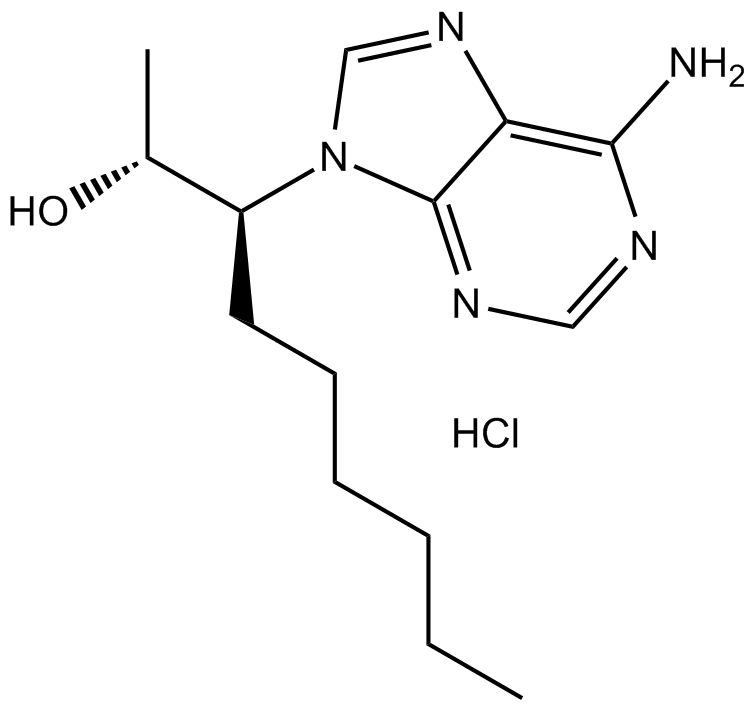EHNA hydrochloride (Synonyms: erythro-9-(2-Hydroxy-3-nonyl)adenine) |
| Katalog-Nr.GC10935 |
EHNA-Hydrochlorid ist ein potenter und selektiver dualer Inhibitor der zyklischen Nukleotid-Phosphodiesterase 2 (PDE2) (IC50=4 μM) und der Adenosindeaminase (ADA).
Products are for research use only. Not for human use. We do not sell to patients.

Cas No.: 58337-38-5
Sample solution is provided at 25 µL, 10mM.
EHNA is a reversible adenosine deaminase inhibitor (IC50 = 1.2 μM in human red blood cells) that also selectively inhibits the cGMP-specific phosphodiesterase (PDE2) (IC50s = 0.8 and 2 μM from human and porcine myocardium, respectively, 3.5 μM in rat hepatocyte, and 5.5 μM in human platelet).[1],[2] Comparatively, EHNA is much less potent at inhibiting PDE1, PDE3, or PDE4 (IC50s > 100 μM).1 EHNA has been used to evaluate cardioprotective and neuroprotective effects during ischemia, to study the role of cAMP/cGMP signaling, and to maintain pluripotency/prevent differentiation of human embryonic stem cells.[3],[4][5]
Reference
[1]. Podzuweit, T., Nennstiel, P., and Müller, A. Isozyme selective inhibition of cGMP-stimulated cyclic nucleotide phosphodiesterases by erythro-9-(2-hydroxy-3-nonyl) adenine. Cell. Signal. 7(7), 733-738 (1995).[
[2]. Michie, A.M., Lobban, M., Müller, T., et al. Rapid regulation of PDE-2 and PDE-4 cyclic AMP phosphodiesterase activity following ligation of the T cell antigen receptor on thymocytes: Analysis using the selective inhibitors erythro-9-(2-hydroxy-3-nonyl)-adenine (EHNA) and rolipram. Cell. Signal. 8(2), 97-110 (1996).
[3]. Barankiewicz, J., Danks, A.M., Abushanab, E., et al. Regulation of adenosine concentration and cytoprotective effects of novel reversible adenosine deaminase inhibitors. J. Pharmacol. Exp. Ther. 283(3), 1230-1238 (1997).
[4]. Dickinson, N.T., Jang, E.K., and Haslam, R.J. Activation of cGMP-stimulated phosphodiesterase by nitroprusside limits cAMP accumulation in human platelets: Effects on platelet aggregation. Biochem. J. 323(Pt. 2), 371-377 (1997).
[5]. Burton, P., Adams, D.R., Abraham, A., et al. Erythro-9-(2-hydroxy-3-nonyl)adenine (EHNA) blocks differentiation and maintains the expression of pluripotency markers in human embryonic stem cells. Biochem. J. 432(3), 575-584 (2010).
Average Rating: 5 (Based on Reviews and 37 reference(s) in Google Scholar.)
GLPBIO products are for RESEARCH USE ONLY. Please make sure your review or question is research based.
Required fields are marked with *




















